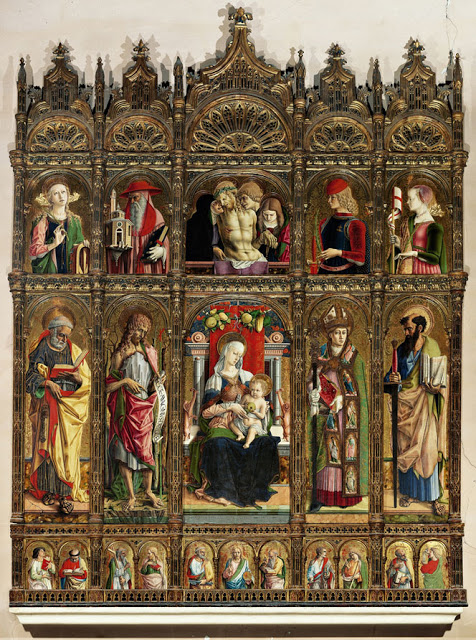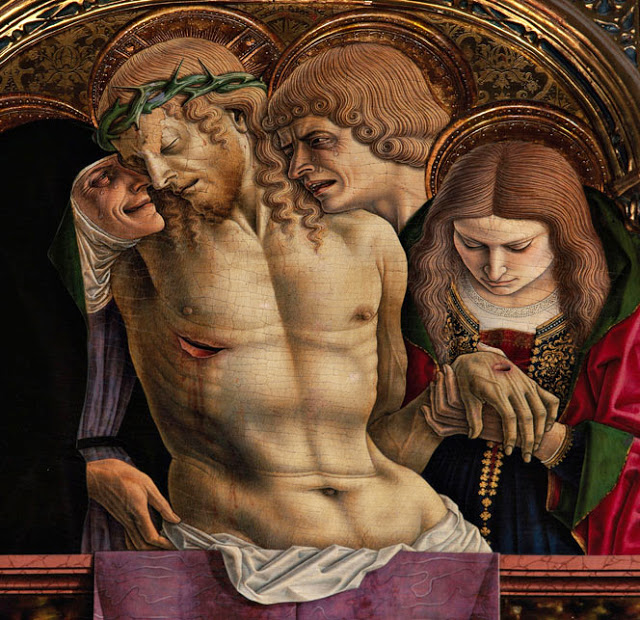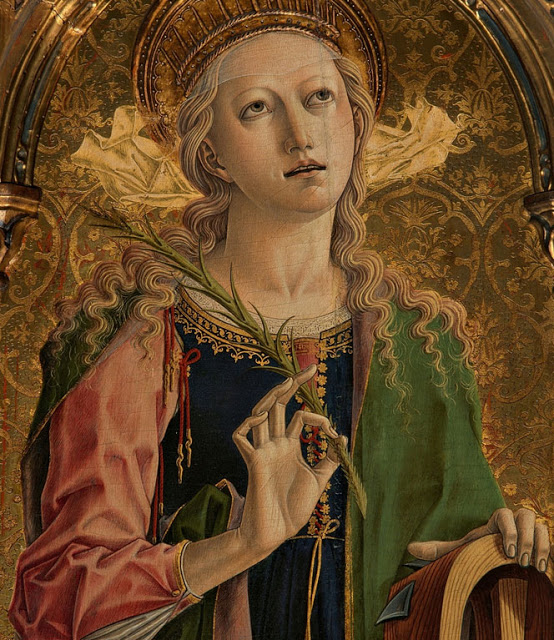Carlo Crivelli was profoundly influenced by early Renaissance art in Padua. His Polyptych of the Cathedral St. Emidius, of 2.90×2.80 metres and divided into three rows, is exactly at the same place where it was first put in 1473.
According to Catholic teaching, there was no pain similar to Mary’s before her dead Jew, as shown in this interpretation of the Pietà by Crivelli.
In the same Polyptych we can see St. Catherine of Alexandria (top left in the Polyptych; close-up below). According to tradition, she was a Christian saint and virgin, martyred in the early 4th century at the hands of the evil pagan emperor Maxentius.
There is only one problem with such pious legend: Catherine of Alexandria probably didn’t exist. Just as they did with World War II, where the Allies blamed the Germans for the crimes the Allied forces had committed—the genocide of millions of defenceless Germans—, instead of telling the story of Hypatia of Alexandria, a true martyr, the Christians invented the apocryphal story of St. Catherine of Alexandria…
The Christians, with their astronomic lies and fantastic inversions, are virtuosos in inducing guilt among the white peoples. Like the Jews, the goal of the Christians is to overwhelm the blond beast with massive guilt.
But it is difficult to blame Crivelli for his Polyptych. In the 15th century, books like the recently published The Myth of Persecution: How Early Christians Invented a Story of Martyrdom by Candida Moss had not been published. And anyway, Crivelli’s Catherine at least reflects Aryan female beauty.


